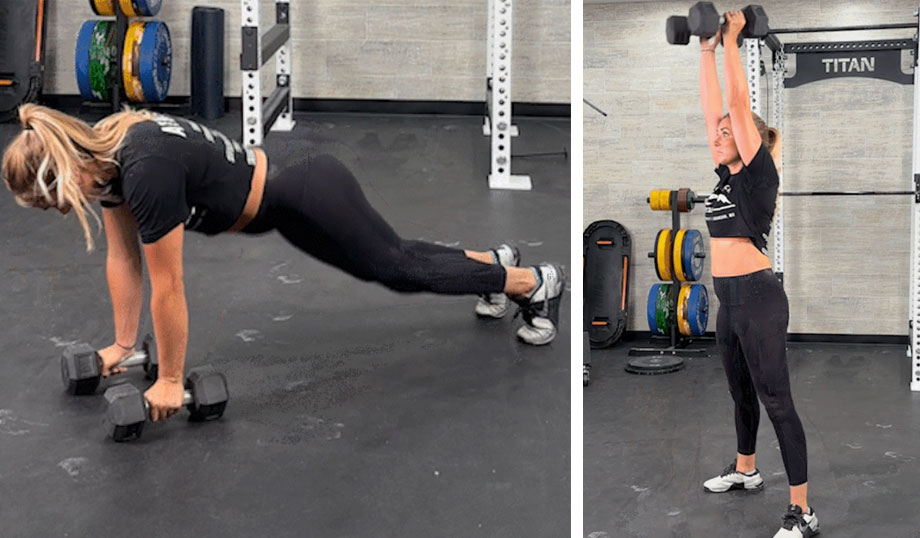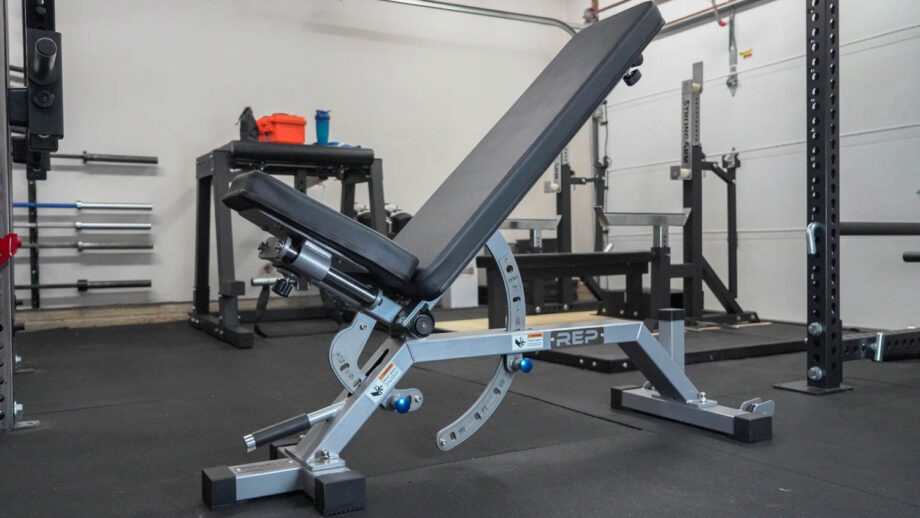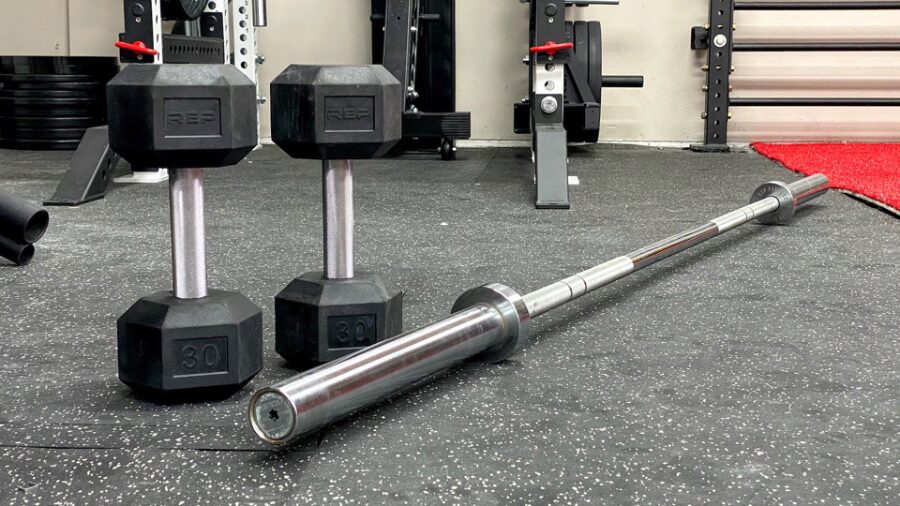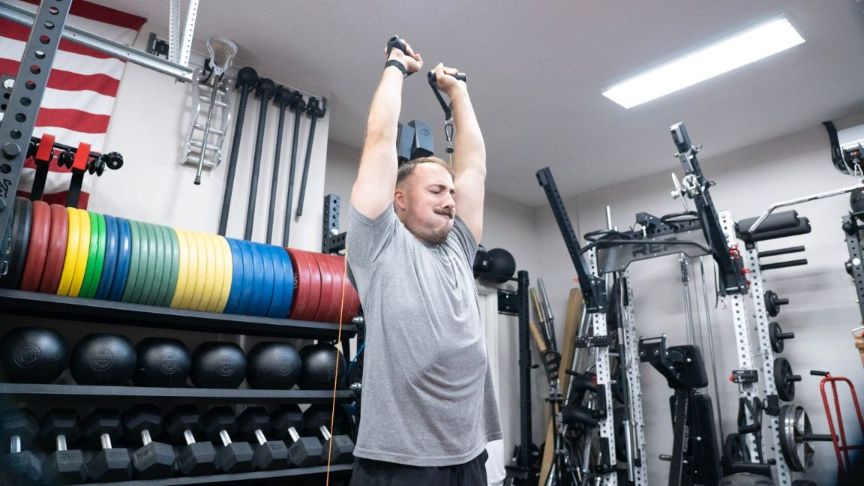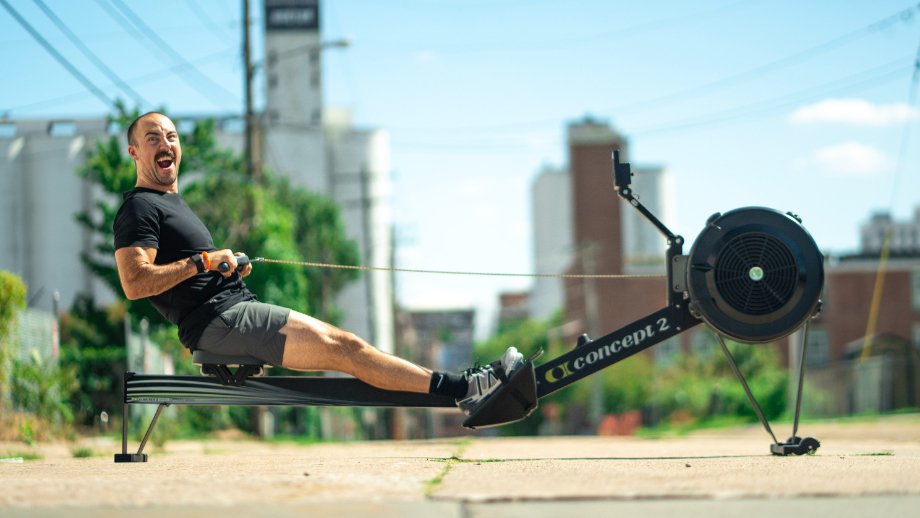Some people are satisfied just going to the gym, getting in their cardio, hitting the weights, and calling it a day. There’s nothing wrong with that if it works for you, but for some, that’s not enough.
Some folks are always chasing that next fitness thrill. They’re always craving new challenges, near-impossible exercises, punishing WODs that totally run them through the wringer, and other ways to push their limits and test their mettle. Their friends think they’re a little crazy, but one thing’s for sure: they’re our kind of people.
So, if this sounds like you, stick around. Our guide is about the unholy spawn hybrid of the burpees exercise and double dumbbell snatch: the devil press. It’s one hell of an exercise, and for those bold enough to rise to the challenge, a world of gains awaits.
Kate Meier, NASM-CPT, USAW-L1, CF-L1, GGR senior director of content, shares step-by-step instructions, trainer tips, benefits, and more!
How To Do the Devil Press Exercise
Muscles worked: Chest, triceps, glutes, quads, hamstrings, back, deltoids, core
- Set two dumbbells on the floor approximately shoulder-width apart from one another.
- Reach down, grasp the dumbbells with a neutral grip, and step or jump your feet back.
- Lower your body to the floor with your chest between the dumbbells.
- Push yourself up and step or jump your feet forward so that they’re outside the dumbbells.
- Swing the dumbbells between your legs, similar to the start of a kettlebell swing, and extend your hips to snatch the dumbbells overhead, keeping your arms close to your body.
- Pause briefly in the end position, squeeze, then guide the weights back to the floor.
- Step or jump your feet back and cycle into the next rep.
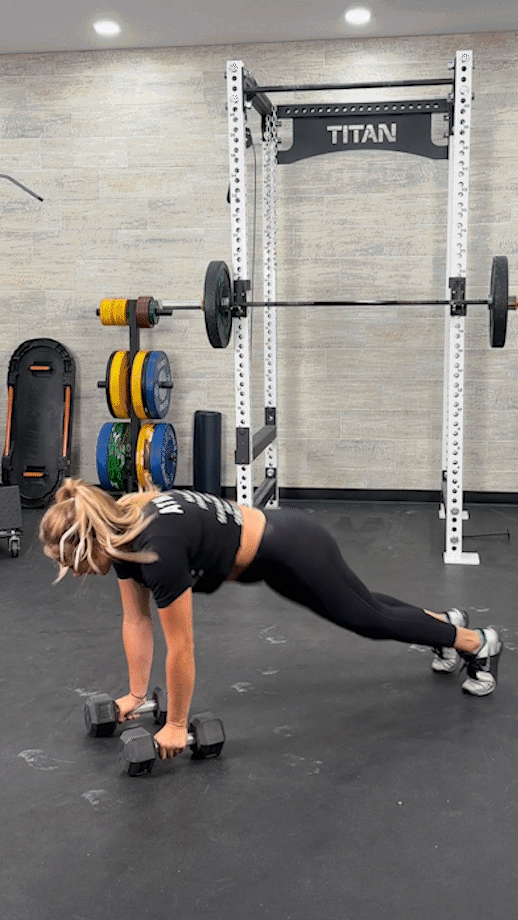
Devil Press Benefits
The devil press is one hell of an exercise, but what kinds of benefits does it provide?
More Work, Less Time
According to Frontiers in Physiology1, “[resistance training] programs involving [multi-joint] exercises appear to be more efficient for improving muscle strength and maximal oxygen consumption than programs involving [single-joint] exercises.”
The devil press takes the cake (the devil’s food cake?) when it comes to recruiting literally every muscle and joint in the body, meaning you’ll get a top-notch workout in a fraction of the time.
Enhances Explosive Power
When performing the devil press exercise, you need a powerful hip hinge motion to propel the dumbbells into the overhead position. So, through practice, you’ll build greater explosive power that translates nicely to other lifts and exercises, like the kettlebell swing, barbell snatch, clean and jerk, and more.
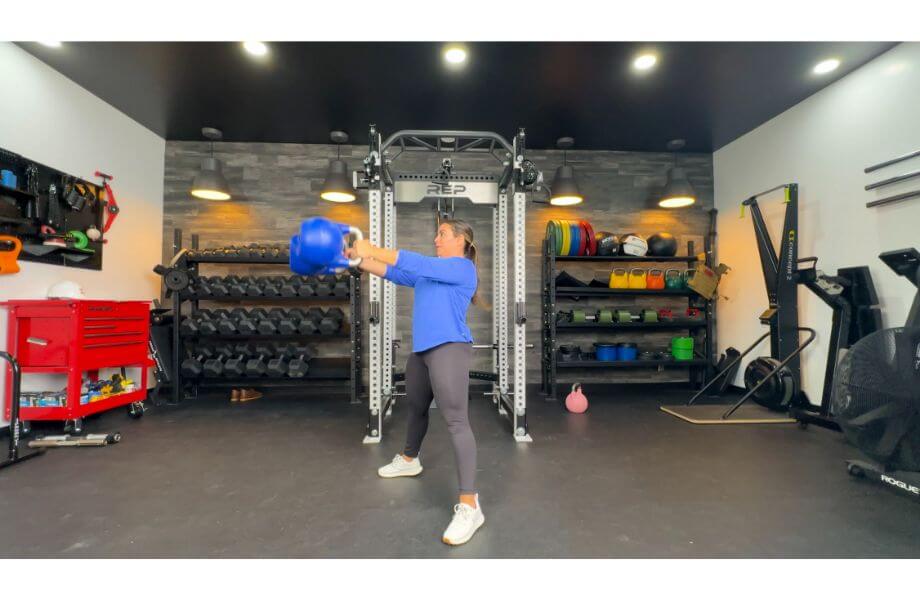
RELATED: Explosive Workouts
Improves Overall Mobility
The range of motion of the devil press exercise is absurd. A single rep requires getting on the floor from a standing position, sprawling into the prone position, hopping back to your feet, and snatching two dumbbells overhead.
Moving through a movement of this magnitude multiple times per set means you’ll make some major progress on your mobility.
Just make sure you warm up properly. Your poor achy lower back will thank you.
RELATED: Best Warm-Up Exercises
Common Devil Press Mistakes
A single devil press rep takes a few seconds, but a lot can go wrong in that short period. Watch out for some of the most common mistakes so you don’t reinforce bad habits.
Not Keeping Your Dumbbells Close
The idea is to use a little bit of a swing going into your hip hinge so the dumbbells pop right up toward the overhead position without you having to muscle them up there using your arm strength. So, the snatch portion of the rep begins with an itty bitty swing—much like a kettlebell swing—followed by the snatch, which is not like a kettlebell swing.
“Swinging the dumbbells away from the body could cause injury, but it’s also poor movement efficiency,” says Kate Meier, NASM-CPT, USAW-L1, CF-L1. “To avoid this, keep your elbows tight as you guide the dumbbells upward, turn over your wrists, and punch them overhead.”
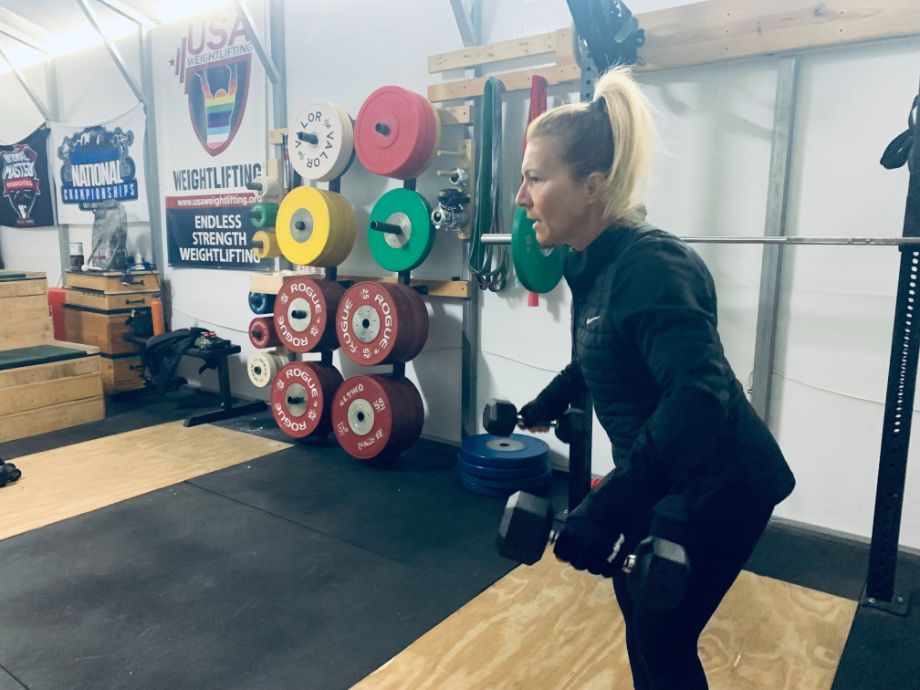
Bringing the dumbbells back to the floor should also be done in one fluid motion, if possible, but it takes practice. For beginners, making a pitstop at the front rack position is a totally fine, albeit slower, way to get the job done.
RELATED: Dumbbell Snatch
Running Out of Energy
The devil press exercise is a high-intensity movement that spikes your heart rate, saps your energy, torches basically every major muscle group, and leaves you gasping for air. There are ways to manage that massive energy expenditure.
“Strict burpees involve doing an actual push-up for each rep,” says Kate. “Strict push-up reps for burpees and the devil press are incredible for general strength and muscle building, but they’re murder in a WOD.”
If the goal is to lay waste to reps or score big on an AMRAP, you can’t afford to do a strict push-up on every repetition. Instead, get your body on the floor, let your whole body come to rest briefly, and then push yourself up so you can save your strength.
“Jumping your feet back to the front is quicker than stepping, but it’s also exhausting,” says Kate. “If you’re performing a longer workout, consider stepping rather than jumping when doing your burpees to save energy.”
It’s slower to step than jump, but similar to the box jump dismount, it’s much better for conserving energy. Consider this if your WOD is more of a marathon than a sprint.
Losing Your Neutral Alignment
As stated above, compound exercises like burpees, thrusters, and the devil press will utterly annihilate your energy reserves and fatigue your muscles in no time. But, as the reps start adding up, it’s imperative you maintain neutral alignment.
That means whether you’re on rep one or 100, your back and neck should be straight, your eyes fixed forward, and your core braced.
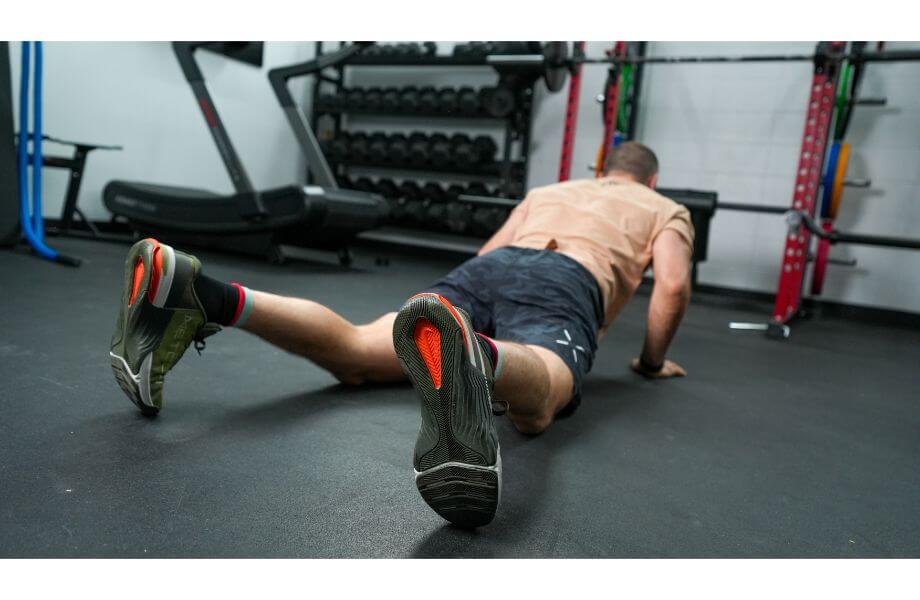
“It’s especially tempting to round your back while getting on or off the floor, but you need to keep the form strict to protect your spine,” says Kate. “Letting it go leaves you susceptible to all sorts of awful injuries.”
Not Setting Up Correctly
Successful devil press reps rely on getting properly set up from the jump. Do yourself a favor and place your pair of the best dumbbells on the floor roughly shoulder-width apart so that your chest has enough room to touch the floor in between them at the bottom of your burpee.
“Going too wide stresses your shoulder joint by putting you in an awkward position, but you can’t have the dumbbells too close, or you’ll wind up with your chest on top of them,” adds Kate.
Going too wide can also make things tricky when it’s time to jump or step your feet forward. You’ll want your feet to land outside the dumbbells so that, once standing, you can transition into the snatch without having to readjust.
You’ll want to remember this placement as you cycle into the next rep so your form can stay tight and consistent for the whole set. Mark the floor with tape where your dumbbells should go at the beginning of each rep, if possible.
Devil Press Alternatives
The devil press exercise is dastardly, so a welcome alternative is breaking the movement down into each component as you build your strength and stamina.
Burpee
Why do it: The first phase of the devil press exercise is a burpee, so doing burpees will directly translate to better performance on devil presses. Burpees are among the best bodyweight exercises for cardio conditioning and strength training.
How to do it:
- Stand with your feet shoulder-width apart.
- Bend forward and place your hands on the floor.
- Step or jump your feet back into the high plank position.
- Lower your body to the floor by bending your elbows.
- Push yourself off the floor, step or jump back to the front, and explode into a jump with both feet, bringing your arms up overhead.
- Land, reset, and cycle into the next rep.
RELATED: At Home Bodyweight Workout
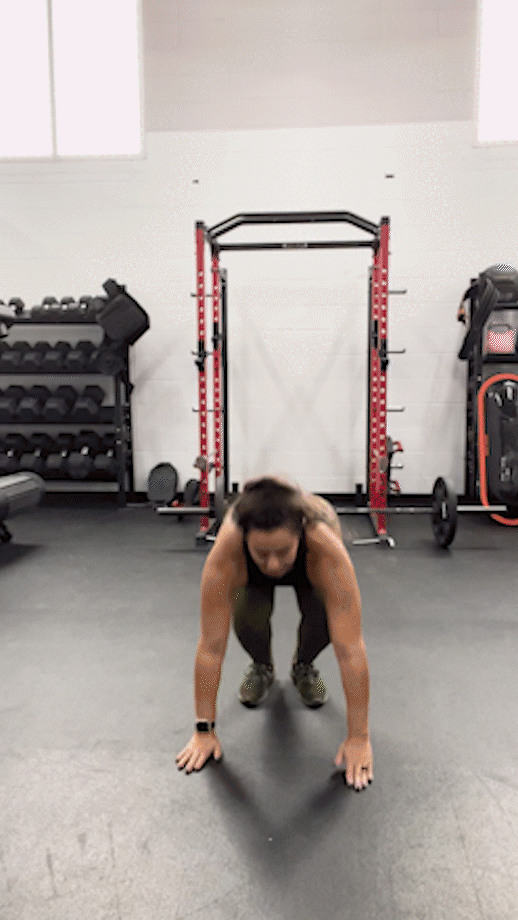
Kettlebell Swing
Why do it: Practicing the kettlebell swing’s movement pattern also helps improve biomechanics during the devil’s press. According to the International Journal of Exercise Science2, kettlebell swings improve cardio conditioning, including VO2 max, allowing you to soldier on when the going gets tough.
How to do it:
- Hold a kettlebell with both hands in front of your body.
- Push your hips back, lean your torso forward, and slightly bend your knees before thrusting your hips forward and swinging the kettlebell up and away from your body.
- Swing the kettlebell to chest height for Russian kettlebell swings or to the overhead position for American kettlebell swings.
- Guide the kettlebell as it swings back down, allowing it to arc between your legs.
- Thrust your hips forward again to cycle into the next rep.
- Repeat as needed.
RELATED: Russian Kettlebell Swing Vs American
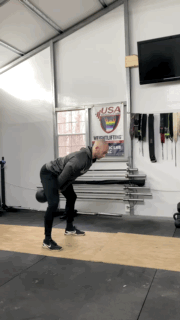
Dumbbell Snatch
Why do it: “Dumbbell snatches, like burpees, isolate a specific portion of the devil press exercise and allow you to workshop your form,” says Kate Meier, NASM-CPT, USAW-L1, CF-L1. “Snatches are generally good for improving strength, explosive power, and timing for Olympic lifts, too.”
How to do it:
- Place a dumbbell on the floor in between your legs.
- Push your hips back, bring your chest forward, and bend your knees as though about to deadlift and grip the dumbbell with one hand using a neutral grip.
- Drive through your heels, extend your knees, and thrust your hips to stand.
- As the dumbbell rises to thigh level, use your hip extension to send it upward.
- Continue until your arm is fully locked out.
- Pause briefly, then return the weight to the floor by reversing the movement.
- You may finish all reps before switching sides or alternate sides each rep.
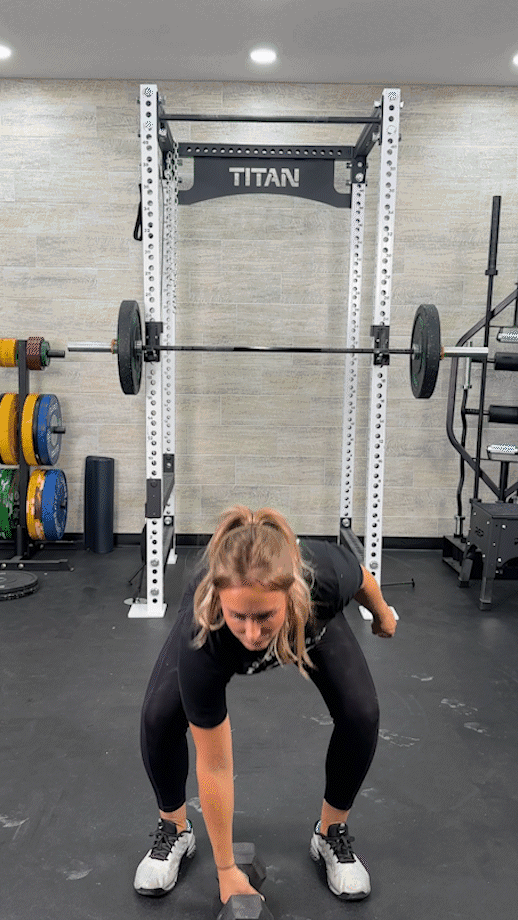
Push Press
Why do it: The push press builds overhead lockout strength and upper body muscle, but the reason it makes a great devil press alternative is because it simplifies the snatch phase of the exercise.
How to do it:
- Load a barbell to your weight specifications and unrack it in the front rack position.
- Step away from the rack, stabilize yourself, and stand with your feet shoulder-width apart, chest tall, elbows forward, and core braced.
- Slightly bend your knees to dip.
- Extend your knees and lift up onto your toes to propel the bar upward.
- Continue until your arms reach full lockout.
- Squeeze your traps, delts, and glutes at the top of the movement.
- Slowly bring the bar back to the front rack position.
- Repeat as needed.
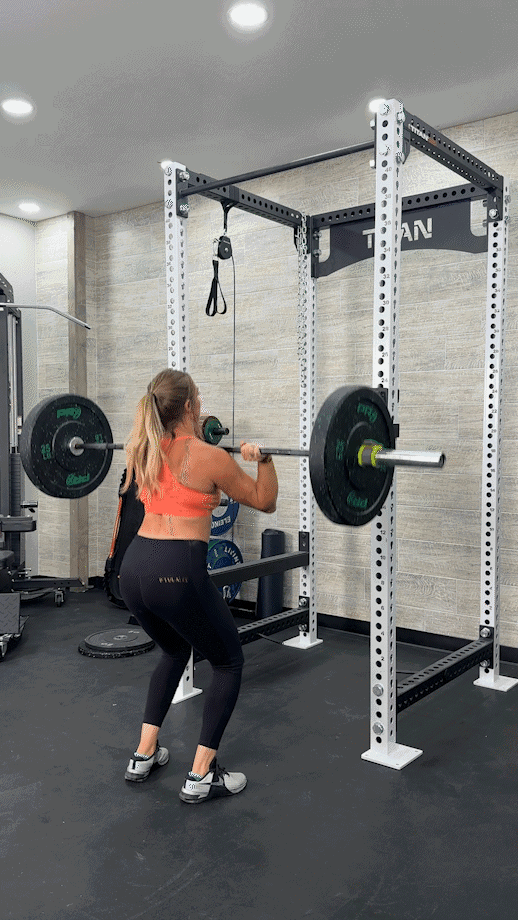
How to Program the Devil Press Exercise
The cool thing about the devil press is that, as a high-intensity compound exercise, it works well for building functional strength or enhancing cardio conditioning. It’s all in the programming.
- For functional training: Use heavy dumbbells and do 3 to 5 sets of 5 unbroken reps
- For endurance: Use light to moderate dumbbells and shoot for 3 to 5 sets of 8 to 12 reps
- For cardio: Use light dumbbells and do 2 to 4 sets of 20 unbroken reps
The devil press exercise also works well in CrossFit WODs, including AMRAPs and EMOMs. Some WODs even pair the devil press with other bodyweight or weightlifting movements to really test your mettle, so, if you fancy yourself a hopeful CrossFit Games candidate, you may consider combining your devil press reps with pull-ups, lunges, and other exercises so you’re ready for anything.
For personalized recommendations or WOD fitspiration, consider working with a certified personal trainer, CrossFit coach, or other qualified fitness professional.
RELATED: Best Online Personal Trainer
Who Should Do the Devil Press Exercise?
We’d be remiss in our role as your go-to online fitness authority if we didn’t accurately point out that anyone and everyone can use the devil press exercise to make headway on their fitness goals; the question is: should everyone do the devil press?
Hell no.
The devil press is tough as nails, and if we’re being honest (and you know we always are), lots of folks may unnecessarily place themselves in harm’s way trying to learn and perfect this ultra-technical movement.
If you’re a beginner or middle-of-the-road gym-goer, there’s no shame in sticking to burpees. You’ll still get an amazing workout, and your risk of injury is significantly lower.
That said, athletes needing a healthy mix of strength and conditioning, like mixed martial artists, would-be CrossFit Games contenders, and other athletes, can benefit vastly from the devil press exercise.

Devil Press Exercise: FAQs
What is the difference between a burpee and devil press?
Both the burpee and the devil press exercise are compound exercises, but the devil press is far more involved. The devil press involves performing a dumbbell burpee first before immediately performing a double dumbbell snatch.
So, a burpee is essentially half of the devil press movement.
What muscles does the devil press target?
A shorter list may be what the devil press doesn’t target, but the devil press exercise targets muscle groups virtually everywhere.
You’re hitting your upper body muscles like the chest, shoulders, upper back, and arms, lower body muscles like your legs and lower back, and your core for stabilization.
It’s a quintessential full-body exercise.
What is a good substitute for the devil press?
“If you’re proficient with burpees and dumbbell snatches separately, it’s okay to split the movement into a set of each exercise,” recommends Kate Meier, NASM-CPT, USAW-L1, CF-L1, and GGR senior director of content. “Otherwise, doing only the burpees and an upper body movement like the kettlebell swing or push press will provide a similar stimulus, making those good substitutes.”
References
1. Paoli A, Gentil P, Moro T, Marcolin G, Bianco A. Resistance Training with Single vs. Multi-joint Exercises at Equal Total Load Volume: Effects on Body Composition, Cardiorespiratory Fitness, and Muscle Strength. Front Physiol. 2017;8:1105. Published 2017 Dec 22. doi:10.3389/fphys.2017.01105
2. Fortner HA, Salgado JM, Holmstrup AM, Holmstrup ME. Cardiovascular and Metabolic Demands of the Kettlebell Swing using Tabata Interval versus a Traditional Resistance Protocol. Int J Exerc Sci. 2014;7(3):179-185. Published 2014 Jul 1.


